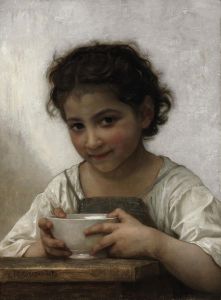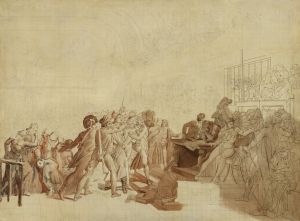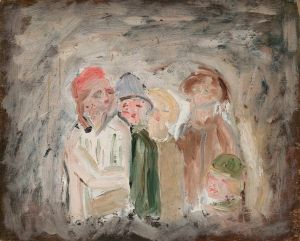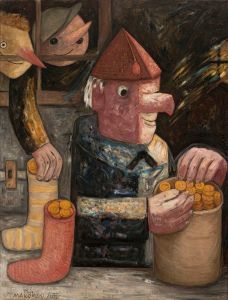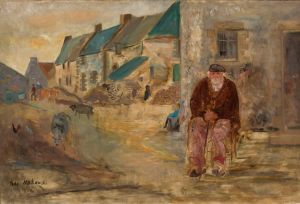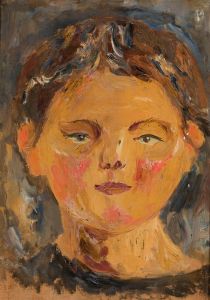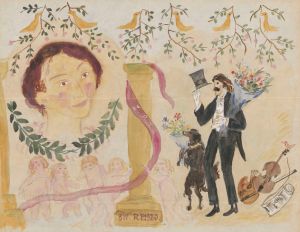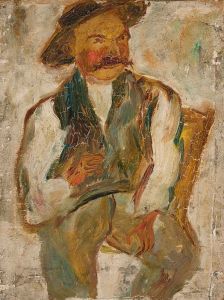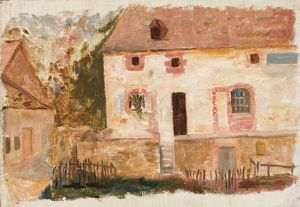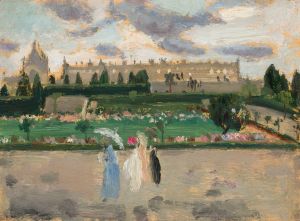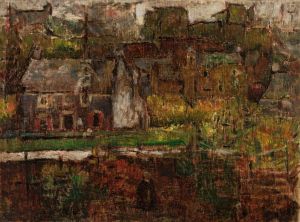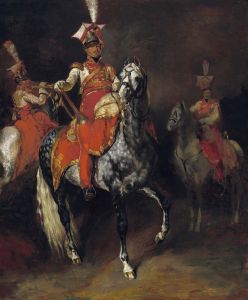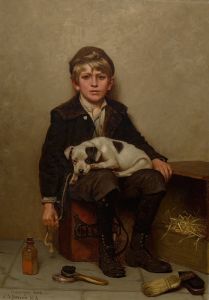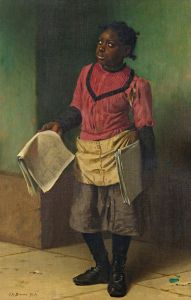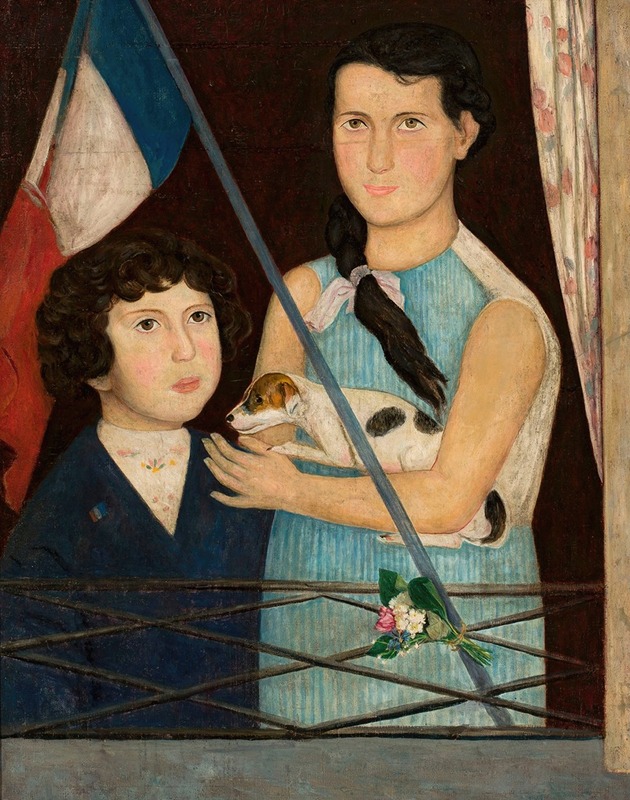
Two children with a French flag
A hand-painted replica of Tadeusz Makowski’s masterpiece Two children with a French flag, meticulously crafted by professional artists to capture the true essence of the original. Each piece is created with museum-quality canvas and rare mineral pigments, carefully painted by experienced artists with delicate brushstrokes and rich, layered colors to perfectly recreate the texture of the original artwork. Unlike machine-printed reproductions, this hand-painted version brings the painting to life, infused with the artist’s emotions and skill in every stroke. Whether for personal collection or home decoration, it instantly elevates the artistic atmosphere of any space.
Tadeusz Makowski was a Polish painter known for his distinctive style that often depicted children and scenes of everyday life with a touch of whimsy and simplicity. Born in 1882 in Oświęcim, Poland, Makowski initially studied classical philology at the Jagiellonian University in Kraków before pursuing his passion for art at the Academy of Fine Arts in Kraków. He later moved to Paris in 1908, where he became part of the vibrant artistic community and was influenced by various modern art movements.
"Two Children with a French Flag" is one of Makowski's notable works, reflecting his unique approach to painting. Although specific details about the painting's creation and its current location are not widely documented, it is characteristic of Makowski's style during his mature period. His work often features children, portrayed with a sense of innocence and simplicity, set against minimalistic backgrounds that emphasize their expressions and interactions.
Makowski's time in France exposed him to the works of artists like Paul Cézanne and the Cubists, which influenced his artistic development. However, he maintained a distinct style that combined elements of folk art and modernism. His paintings often feature simplified forms, muted colors, and a focus on the emotional and narrative content of the scene.
In "Two Children with a French Flag," Makowski likely employs his typical approach of using geometric shapes and a limited color palette to create a scene that is both charming and thought-provoking. The depiction of children with a national symbol such as the French flag could suggest themes of identity, innocence, and the impact of national culture on the younger generation. However, without specific historical context or commentary from the artist, interpretations of the painting remain open to the viewer's perspective.
Makowski's work is celebrated for its ability to convey deep emotional resonance through seemingly simple compositions. His paintings often evoke a sense of nostalgia and reflect his interest in the purity and sincerity of childhood. Despite the challenges he faced during his lifetime, including the tumultuous events of World War I and World War II, Makowski continued to create art that captured the essence of human experience through the lens of childhood.
Today, Tadeusz Makowski is regarded as an important figure in Polish art, and his works are held in various collections, including the National Museum in Warsaw and the Musée National d'Art Moderne in Paris. His legacy continues to influence artists and captivate audiences with its unique blend of modernist techniques and timeless themes. While specific information about "Two Children with a French Flag" may be limited, the painting remains a testament to Makowski's skill in capturing the universal qualities of childhood and the subtle complexities of human emotion.





